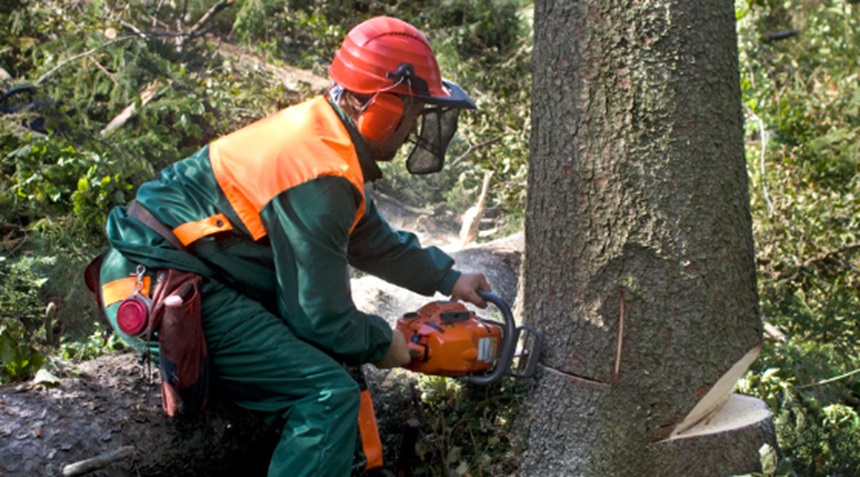Trees are essential to any yard, providing shade, beauty, and even value to your property. However, they can also become a significant safety risk if their health begins to decline. Knowing when to seek professional help is crucial to maintaining both the safety and aesthetics of your property. Whether it’s to address potential dangers or curb growth issues, understanding the warning signs can prevent costly damages. If you’re considering tree removal in Cumming GA, consulting experts ensure the process is safe and thorough.
Professionals can assess underlying issues you might overlook, which is why timely action is essential. Here are some key signs to help you identify when your tree might need a professional evaluation.
Visible Damage on the Tree Trunk
Cracks, splits, or wounds on the trunk often indicate deeper structural problems.
While a healthy tree might endure minor scratches, large vertical cracks or hollow spots could be an alarming sign. These are not just surface-level issues. They can weaken the tree’s structural stability, increasing the risk of it falling during storms or heavy winds. Professionals have the tools and expertise to pinpoint whether these are superficial concerns or symptoms of a much larger issue.
Dead or Wilted Branches
The condition of your tree’s branches can reveal a lot about its health.
Dead branches are easy to spot—they usually appear brittle and lifeless and lack foliage during peak growing seasons. If you notice several branches dying off in one area, it may indicate disease or pest infestation. The more dead limbs a tree has, the weaker it could become. Removing dead branches is essential not only to restore balance but also to ensure the tree poses no risk to nearby structures or people. It’s a good idea to familiarize yourself further with why removing dead trees should be a priority to avoid any unpleasant surprises.
Leaning or Unstable Structure
A slight lean in your tree might not be a reason for concern. However, a sudden or significant tilt can be a critical warning sign.
Leaning trees often indicate root damage or underlying instability. Any noticeable change in the angle of your tree is a serious safety hazard and should be evaluated by a professional. External conditions, such as soil erosion or improper placement, might also be contributing factors. Whether a tree can be saved or requires removal depends heavily on expert knowledge.
Presence of Fungi or Pests
Unwanted growth or pests are key indicators your tree might be in trouble.
Mushroom growth at the base or along the trunk is often a sign of decay inside the tree. Similarly, pests like beetles or borers can create tiny holes or cause significant structural damage. This doesn’t just threaten the tree—it could potentially lead to infestations spreading throughout your yard. Addressing these problems early ensures a healthier landscape and prevents larger issues. Additionally, unhealthy trees can negatively impact planting conditions nearby. Learn more about how tree removal impacts soil health and future planting to understand what steps you can take after addressing the issue.
Early Leaf Drop or Discoloration
Healthy trees go through natural cycles, but abnormal patterns signal hidden issues.
If your tree begins shedding leaves earlier than expected or shows widespread discoloration, it may be experiencing stress. This could stem from root damage, lack of nutrients, or disease. While some trees might recover, others require intervention to prevent permanent damage. Professionals can test these issues more accurately and recommend solutions tailored to the tree’s needs.
Unusually Slow Growth
If your tree consistently falls short of its expected growth, there may be an underlying problem.
Several factors can contribute to slow growth, such as soil compaction, insufficient sunlight, or poor watering practices. However, this might also signal more serious concerns like illness or aging. An expert can guide whether the tree requires pruning, reshaping, or eventual removal to ensure the health of the overall yard.
When in Doubt, Bring in the Experts
A tree might seem fine at a glance, but hidden dangers can manifest without warning. Seeking professional assessments is the best way to avoid accidents and maintain a vibrant, safe outdoor space. Specialists have the tools and experience to identify crucial warning signs that the untrained eye might miss. This isn’t just about preserving aesthetics—it’s about protecting your property and those around it.
Conclusion
Your landscape thrives with the right care, and knowing the signs of a troubled tree can make all the difference. From leaning trunks to fungal growth, these indicators shouldn’t be ignored. Addressing problems early could prevent substantial damage while maintaining the beauty of your yard. Trusting professionals ensures a safe, effective, and tailored approach to tree care. When it comes to your property’s well-being, there’s no substitute for informed action and expert help.


